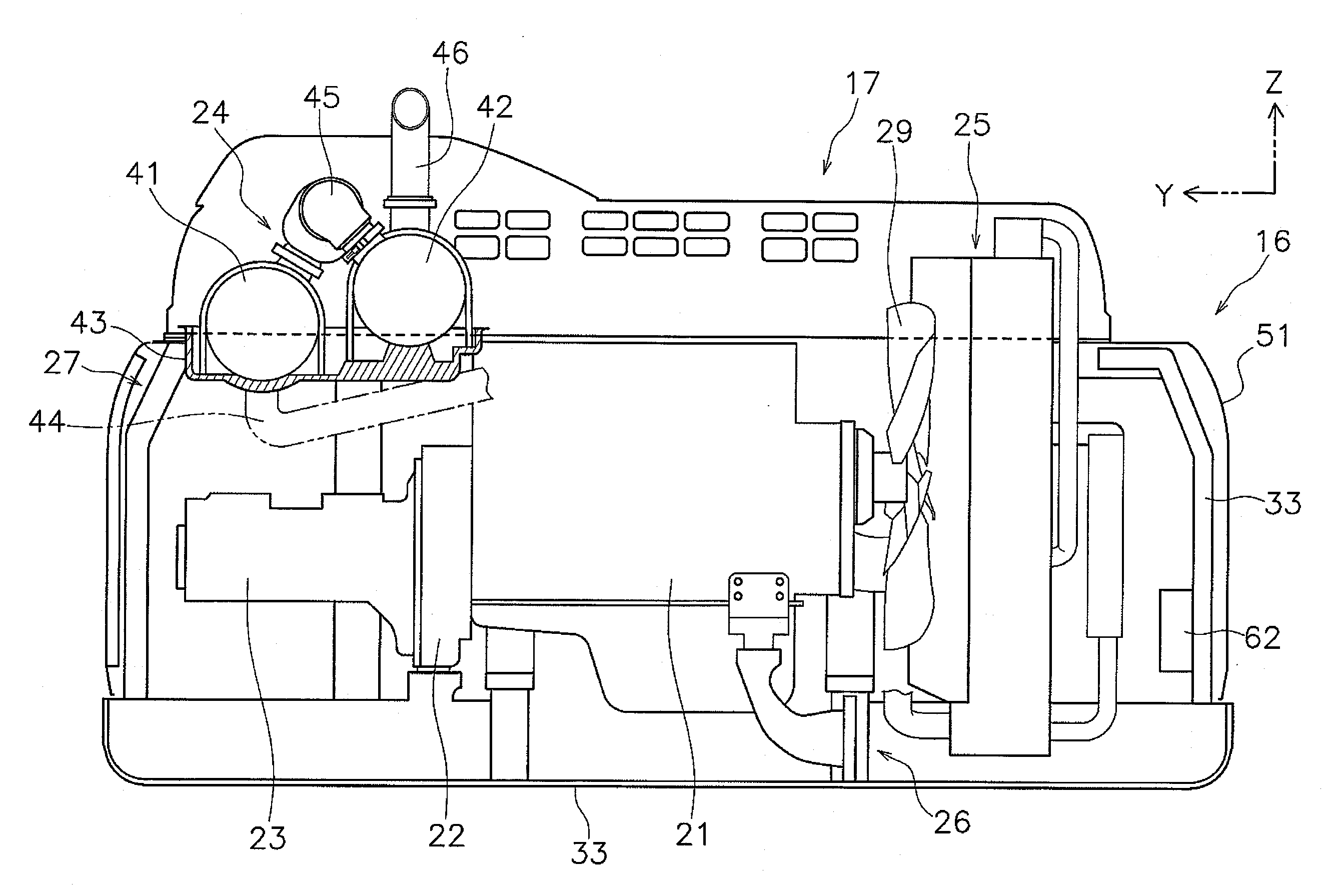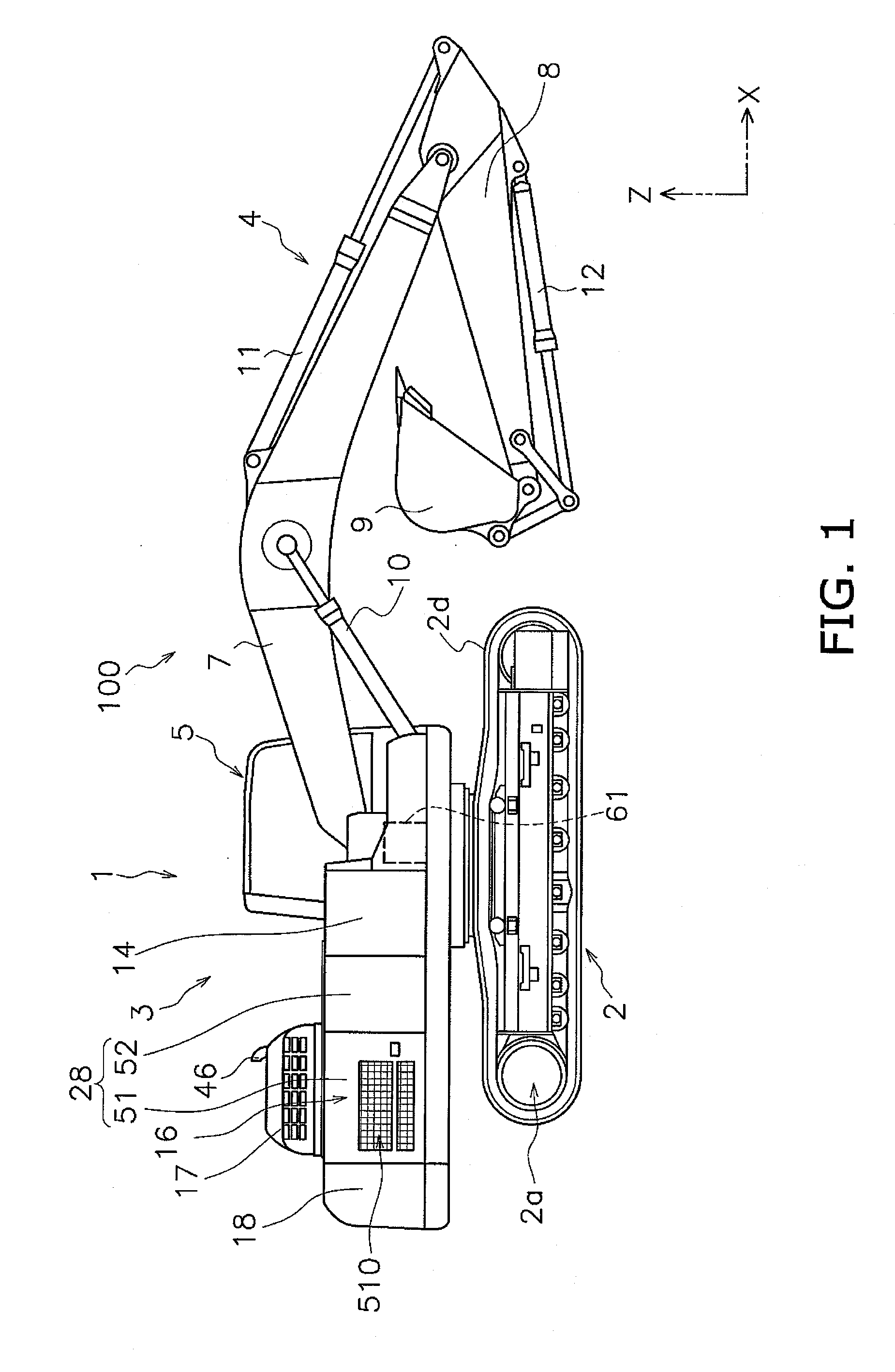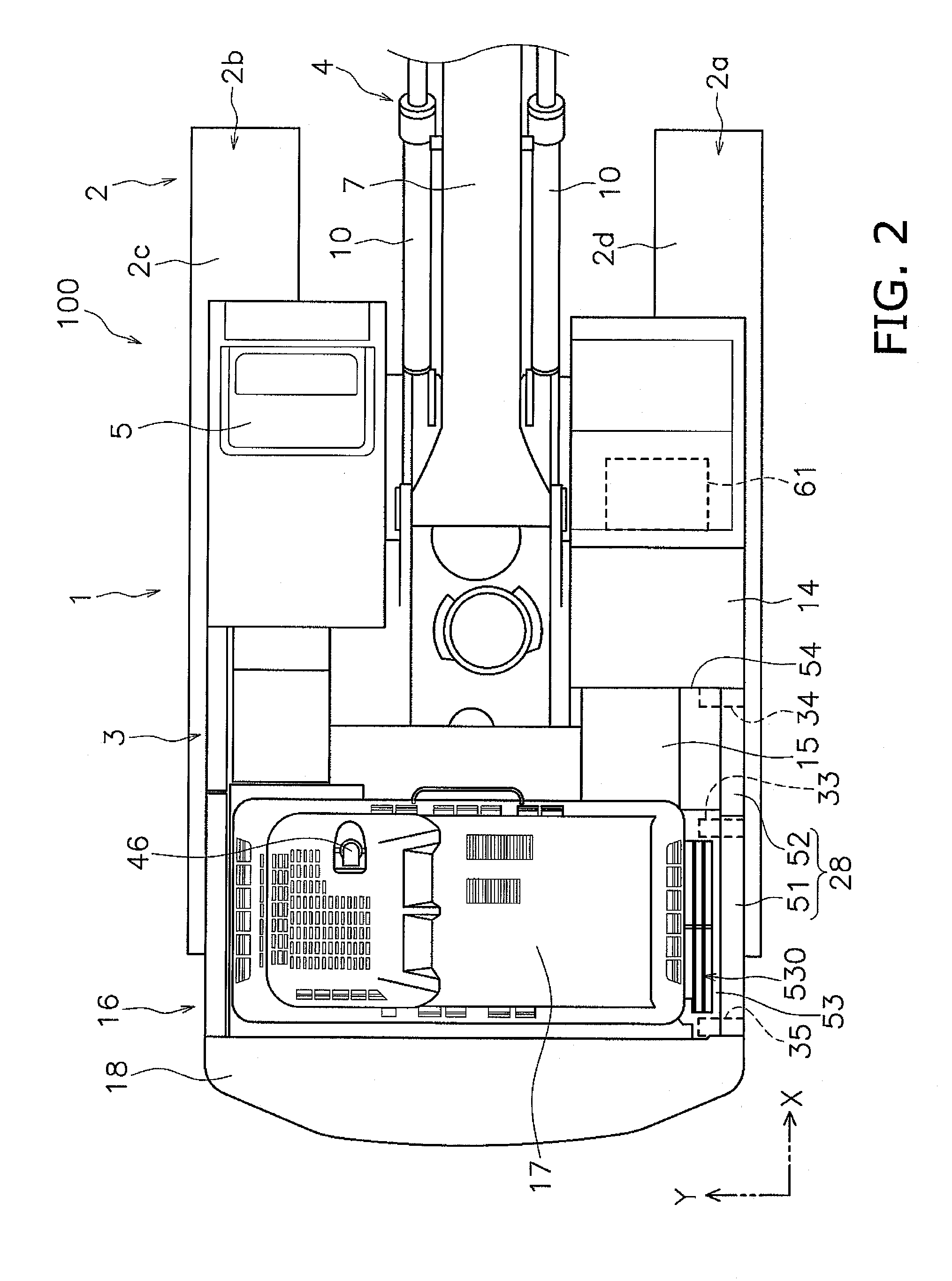Hydraulic excavator
- Summary
- Abstract
- Description
- Claims
- Application Information
AI Technical Summary
Benefits of technology
Problems solved by technology
Method used
Image
Examples
Embodiment Construction
)
[0040]Below, a hydraulic excavator 100 according to an embodiment of the present invention will be described with reference to the diagrams. FIG. 1 is a side surface diagram of the hydraulic excavator 100. FIG. 2 is a planar diagram of the hydraulic excavator 100. As shown in FIG. 1 and FIG. 2, the hydraulic excavator 100 is provided with a vehicle body 1 and a work implement 4.
[0041]The vehicle body 1 has a moving body 2 and a revolving body 3. As shown in FIG. 2, the moving body 2 has a pair of moving apparatuses 2a and 2b. The moving apparatus 2a has a track 2d. The moving apparatus 2b has a track 2c. The moving apparatuses 2a and 2b move the hydraulic excavator 100 by driving the tracks 2c and 2d using driving force from an engine 21 (refer to FIG. 3) which will be described later.
[0042]Here, in the following description, the front and back direction has the meaning of the front and back direction of the vehicle body 1. In other words, the front and back direction is a directio...
PUM
 Login to View More
Login to View More Abstract
Description
Claims
Application Information
 Login to View More
Login to View More - R&D
- Intellectual Property
- Life Sciences
- Materials
- Tech Scout
- Unparalleled Data Quality
- Higher Quality Content
- 60% Fewer Hallucinations
Browse by: Latest US Patents, China's latest patents, Technical Efficacy Thesaurus, Application Domain, Technology Topic, Popular Technical Reports.
© 2025 PatSnap. All rights reserved.Legal|Privacy policy|Modern Slavery Act Transparency Statement|Sitemap|About US| Contact US: help@patsnap.com



